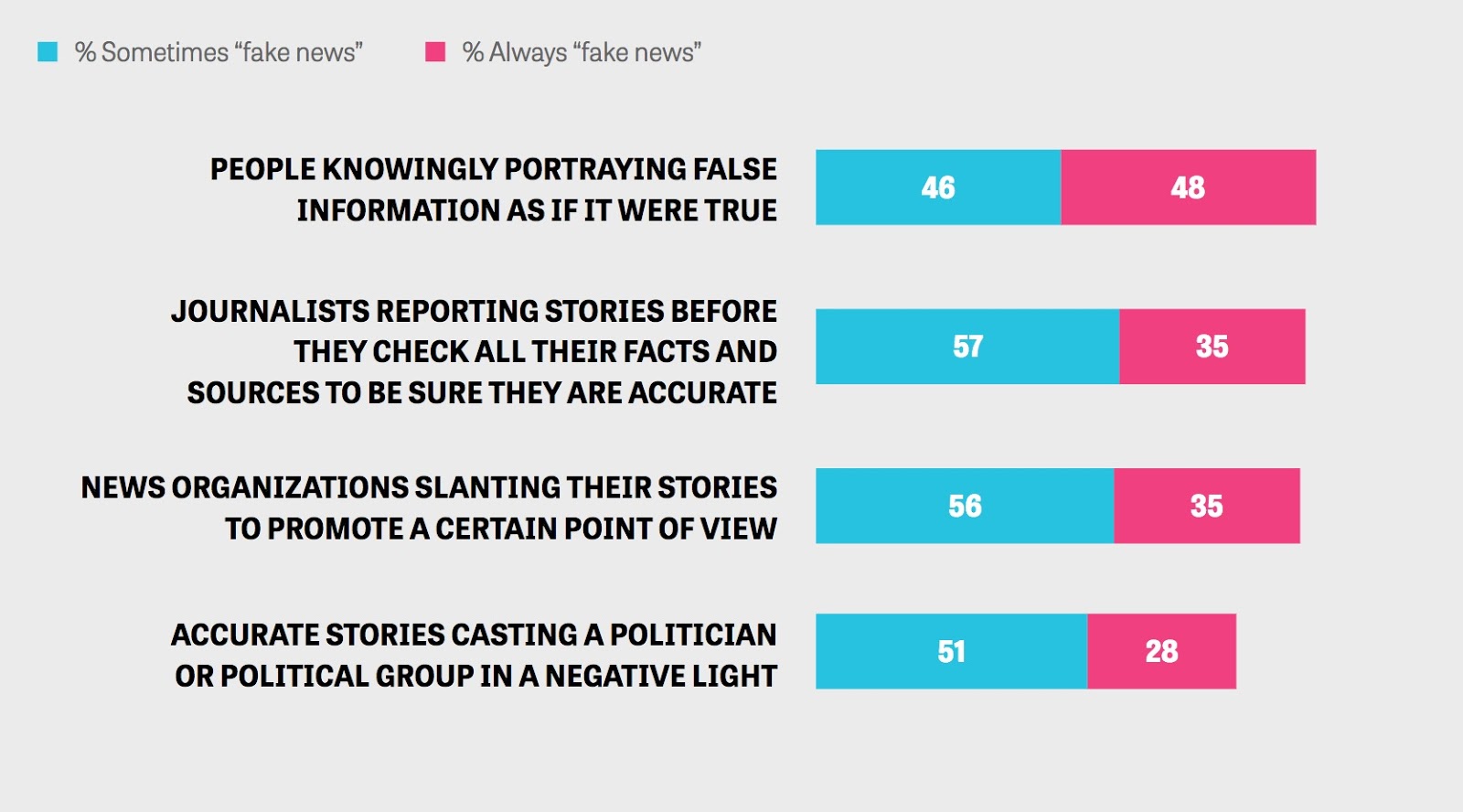As the threat of “fake news” to democracy grows, public trust in the media wavers
 On January 23rd, 2017, the Washington Post hosted an event at its headquarters in D.C. that explored three key questions:
On January 23rd, 2017, the Washington Post hosted an event at its headquarters in D.C. that explored three key questions:
- “What makes people trust some news sources and see others as fake?”
- “The debate about regulating online digital and social media platforms.”
- “Can the concept of a neutral press survive in an era of hyper-partisanship?”
In answering these questions, many of the panelists did what journalists do best; they reported the facts: partisanship, low media literacy, the growth of social media, and the President of the United States calling publications “fake news,” have created a toxic recipe for increasing distrust in the news media today.
In a time where Facebook status updates can gain as much traction as New York Times headlines, understanding public views around “fake news” is crucial to understanding the phenomenon as a whole.
Craig Silverman, Buzzfeed news media editor, is credited for popularizing “fake news”.
Silverman was one of the first to use the term publicly, in a tweet from 2014.
Fake news site National Report set off a measure of panic by publishing fake story about Ebola outbreak: https://t.co/CHrjtpUhyc Scumbags.
— Craig Silverman (@CraigSilverman) October 15, 2014
While Silverman used “fake news” to both criticize the media and hold publications accountable, “fake news” was initially used by many publications to describe online content that was intentionally falsified content, as opposed to inaccurate news, which is corrected or retracted.
“Ironically, I started doing this work in criticism of the mainstream media,” he wrote at Buzzfeed, “tracking incidents of plagiarism and fabrication, publishing annual lists calling out the errors and apologies of the year, and pestering editors who refused to explain what happened when major errors took place in their newsroom.”
Three years later, after his reporting popularized the term, Silverman now cringes when hears it. To him, “fake news” has been “twisted into a partisan cudgel.”
Although Americans have varying definitions of “fake news,” the majority of them say that whatever they think it is is a threat to democracy.
Party identification and technology both play key roles in how this term is defined. Party affiliation also largely influences trust in the media, according to the survey conducted by Gallup, Inc. and the Knight Foundation. Republicans are 19 percent more likely to see “fake news” as a threat than Democrats, and “equal proportions of Americans rely on social media as rely on newspapers to stay informed.”
The increased presence and role of technology in our daily lives means news is everywhere, fake or real. The majority of Americans believe social media has had a negative impact on the news environment over the past 10 years.

Gallup and Knight’s research found political polarization in the country has greater influence on news media perception than race and age on the news we consume and the news we choose to believe.
The survey found that 68 percent of the Americans share news stories do so with people who hold similar views. Therefore, most of the news you receive via friends, family, etc, is news you agree with already.
The survey found that Americans now rely equally on both social media and newspapers to keep them informed. But, as panelists expressed, this changes in technology has also made sifting through news has become more difficult than ever.
Judy Woodruff, anchor and managing editor of PBS NewsHour, said polarization and confirmations bias are increasing challenges for trust in the media.
With unverified information published on social media platforms, it has become hard to differentiate fact from fiction.
“You don’t know what’s true, what’s not true,” said Bret Baier, Fox News’ chief political anchor.
Baier said President Donald Trump’s comments regarding the press have affected the public views of how the press is perceived. On January 17, 2017, the President of the United States released “Fake News Awards,”one of the more recent of many examples of President Trump’s criticism of the media.
Sunlight has previously taken a stance on the role journalism plays in democracy, saying “the day when the U.S. government silences media outlets that publish or broadcast journalism critical of the president is the moment when our democracy begins to die in darkness.”
There, however, is a ray of hope to shine.
Research by Reuters/Ipsos found in November 2017 that overall confidence in the media has risen by 10 percent since Trump’s election in November 2016. More recently, Gallup and Knight’s survey found that the public’s ‘confidence’ in television and newspapers is greater in comparison to social media.
This event – and Gallup and Knight’s research – shed light on the increasing threats that “fake news” and the delegitimization of the press poses for democracies.
As Judy Woodruff observed, democracy is weakened by mistrust in the media.
“A free press, the free media, the role that we play — in our democracy, is part of what holds our democracy together,” she said.
You may get instant youtube views by subscribing and sending your inquiries through our website. Visit us today.

